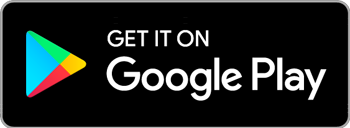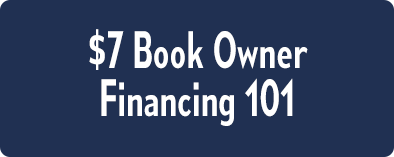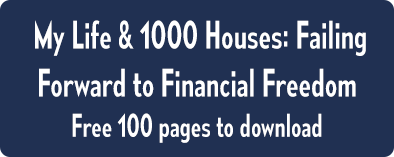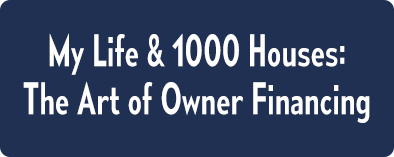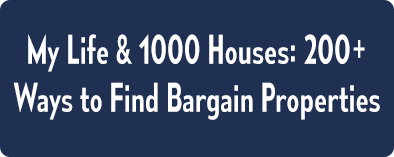PODCAST
How & Where To Buy Properties With John Cochran


Mitch Stephen chats with
John Cochran
Episode 514: How & Where To Buy Properties With John Cochran

How do you know where to buy property? By finding the sweet spots! Mitch Stephen’s guest in this episode is Johnny Cochran, the CEO of The King of Systems. Sweet spots are based upon how much buyer activity is going on into a particular zone. Take those areas where you know there are a lot of buyer activity, then start marketing to sellers in those areas. Want more advice on how and where to buy the property? You wouldn’t want to miss this episode. Tune in!
—
Watch the episode here
I’m here with John Cochran. He’s going to teach you how to find the sweet spot in your town, how to market, how to find these motivated sellers and where to look for them. In the process, I’d like to thank TaxFreeFuture.com. If you have a retirement plan, tax-deferred or tax-free and it’s not self-directed and you would like to take control of your own financial future and decide where your money gets invested, at what rates and at what risks, then check out TaxFreeFuture.com.
It’s a place to rollover your retirement funds into a self-directed retirement fund where you get to choose how you want to invest your money and take control of your financial future. I promise these people won’t be beating you up with an endless stream of phone calls and texts, but give them your micro information and they’ll open up 33 little video vignettes.
You won’t believe what you can do in these retirement programs. You won’t believe how you can proliferate even a tiny amount of money into millions, in theory, if you want to, so check it out. We’re going to talk about finding the sweet spot and how and where to buy properties, but give us a little bit about your background. Where are you from and how did you find yourself in real estate?
I was born and raised in Dayton, Ohio. I like to call it the vacation capital of the world where everybody flocks to. I’ve been in real estate for many years. I’ve been in it since I was nineteen years old. My mother owned a lot of rentals back in the ’90s. I was growing up at that time and I got to mow the grass and go and see how things were managed. I got my boot into the door with the rental business. I got into real estate as soon as I graduated from high school. I bought and flipped a couple of properties. I’ve been addicted ever since.
It was very interesting though, the way that I started. I started by investing in one particular area where I was very used to hanging out in. I had to develop systems to get me out of that area because I flipped just about every single house in that area. I needed better systems to feel comfortable as a real estate investor to start finding properties outside and that I could be very safe in. I started developing systems to put me outside of that area to be able to find properties.
You also have a giveaway for us. Describe what you’re giving away.
I have a tool that we use called the Sweet Spot Locator. What that Sweet Spot Locator does is all across the entire United States, even in all of the non-disclosure states where they don’t disclose the sales prices, what it will do is it will scan your area. What you do is you scan the area, and then it’ll spit out a report to you that tells you the best places to go out there and invest into. It looks at all of the sales history over the past twelve months and it will scan the entire area about a 20-mile radius and what it will do is it will recommend the best places to invest.
It will also tell you where you should not be buying properties at as well based upon there’s not much activity in that area over the past twelve months. We scan your area and then it will recommend the best places to go out there and invest. What you then do is you take those areas where you know that there is a lot of buyer activity, you know that there are a lot of buyers buying in that area and you start marketing to sellers in those areas. That will ensure that you’re in the right sweet spots.
When you’re talking about sweet spots, what’s the definition of a sweet spot?
In my world, the definition of a sweet spot is it’s the best place where buyers are buying houses. That’s what I define as my sweet spot. It is the best areas or best locations where buyers are buying properties. We have four different sweet spot zones. The first zone, we call a wholesale zone. What that is, it’s a sweet spot where there’s a lot of buyer activity. There’s a lot of people buying, but typically those buyers are buying below the median sales price.
What we’ll do is we will go through and scan an entire area and find out what the median sales price is in that area. Once we know what that figure is, let’s say it’s $100,000, then what we’ll do is we’ll have four sweet spots off of that $100,000. If you go into an area and the median sales price is around $40,000 but there’s a lot of buyer activity, that’s a sweet spot, but you have to go through and typically wholesale all those properties out. That would be called a wholesale sweet spot. We’ve got a prehab sweet spot as well, which is right around the median sales price.
If there’s a lot of buyer activities into a prehab sweet spot, what we’ll do is we will make sure that we prehab those properties. We’ll make sure that we’re making them rental-ready and we’re not fixing them up too much, but we’re not doing enough to those properties either. That would be a prehab sweet spot. Then we’ve got a rehab sweet spot as well. These are properties that look at that median sales price, properties that have a lot of buyer activity that is going well above that median sales price.
When you do things, people have to see you all over the place. You got to do it in multiple touches and different ways. Share on XThat’s where we’re rehabbing properties at. The fourth sweet spot that we’ll have is an area where you shouldn’t even go into. We call them the void zone. What that means is, “Don’t go in that area because there’s not enough buyer activity in that area.” When I look at sweet spots, it’s all based upon how much buyer activity is going on in a particular zone.
What motivated someone to take on the task of building software like this because I don’t think it’s easy? Tell me about your experience in making your software. Did you have it done, did you do it yourself or did you sub it out? What did you do? The reason why I’m asking is so many people get in this business and they think they’re going to make a tool. I want to talk a little bit about what you’re undertaking when you decide to make a tool.
This was my second go at it. I’m not a developer. It’s my second software. We’ve had thousands of users onto my very first software, but the second software that I’ve done, which is called Systemate, what that software will do is it will go through, and it manages your entire real estate investing business. It will automatically market you and follow up with sellers in a way that nobody’s ever seen before.
Is it classified as a CRM?
100%. It is totally a CRM. The way that I got into it is I’ve been selling coaching for years and a lot of people are running challenges. We had a challenge going on where we had an application process where people would fill out an application and then they had to be approved to go in there and get into this challenge. I had driven about 1,700 applications into this challenge and I got so mad at my sales team because they were not making any sales. I had done my job as a marketer to bring the applications to the table and they weren’t closing on them.
I got mad at them and I said, “Throw me into the rotation. Let me be a sales guy.” I got in there and I did it. Out of ten people, I closed half of them. When I looked at what in the world was I doing differently? What I was doing differently was I would call the person and if they didn’t pick up, I’d go through and shoot them a text. If they didn’t go through and respond to that, then I would go out there and I’d email them. If I still hadn’t heard from them, I wasn’t scared to send direct mail to them. I would go out there and close them that way and the way that they were doing it, they would call and go, “I didn’t get ahold of anybody,” then hang up.
I looked at that and I was like, “I can automate that entire process of what I did so I can bring a lead into an actual system and then I can shoot them a text, and if they don’t go out there and respond to me, then I can go out there and send them an email. If they still don’t respond to me, I can go through and send them a thank you card or a postcard.” That’s how Systemate was built. The framework of it was built by me going out there and automating the marketing and the follow-up to motivated sellers and to buyers. Since then, we have brought in leads and the Sweet Spot Locator. We’re skip tracing and everything else to make it a full all-in-one system.
It’s all about the follow-up. People think they’re going to go out there and buy a house the first time they talk to someone. That’s not usually how it works. What’s your experience?
It won’t happen that way. I have a unique position now. Because I own a software that provides leads and does marketing to motivated sellers and follows up, I’ve got a lot of insights on what’s going on in the actual market, on what people are doing, what leads are going through and responding, etc. What most people end up doing is they’ll go out there and they’ll get a list of people and then they’ll go and market to that list. They’ll send a postcard. If they don’t go through and get instant results, they won’t send another follow-up piece to that because they didn’t do a deal.
The truth of it is that what people don’t understand is if you go through and send a postcard, that postcard is going to get a 1% to 3% response rate and you’re probably not even going to do a deal on it. What you want to do in your marketing is you want to go and do your cheap marketing. First, throw a postcard out there to make sure that you got the right address.
If they don’t respond to you, boost it up. Go through and follow up via phone call to that actual postcard. Your postcard will get a 1% response rate, but when you follow up on it on a phone call or a text, you’ll boost that up to about 8% to 10% response rate. People give up too easy on the marketing side of this. That’s point-blank what happens.

Buying Properties: A sweet spot is the best place where buyers are buying houses in.
I’m a 50% owner of LiveComm. Smartphone numbers, capture incoming calls or cell phone numbers, but it can also text mass distribution lists. It also has a text merge feature where I can say, “Are you still interested in selling the property at 123 main street?” There are two variables, John and 123 Main Street. I can send out a thousand emails in 30 seconds to a thousand people, but it all seems very personal. The other way to do it is to tie it to a real-life event.
You can send out a text saying, “I sent you a postcard. It ought to be in your mail tomorrow or the day after tomorrow. You’ll recognize it. It’s yellow. Would you please check out my postcard?” It’s all about the touches. He’ll be looking for the postcard now amongst all the other postcards because I described it. You got to find ways to up your chances to move that 1% or 3% a tick or two. At least I haven’t found a way to change it to 50%. Get people to start knowing you on a personal level.
Trying to get anybody to stick to the routine, much less the solo guy who has to do everything to stick to a routine, is almost impossible. Don’t even think you’re going to follow up. If you’re a one-man show and you’re not automating this process, don’t even think for a minute that you’re going to do it for over 30 days, because you’re not, if you even do it three days in a row. You got to get a system like this. Plus, it’s all about automation. You’re not supposed to be doing the follow-up. Where you make the money is showing up to the guy that says, “Come over. Let’s talk.” That’s where you make the money.
You don’t make money as an investor writing letters. Quite honestly, I think that’s why a lot of people don’t do it. You know for a fact that when a seller will go through and call you, you know for a fact that you should probably go out there and send them a card or something like that. If you only had one seller and as I said, “You’ve got one seller and you’ve got 30 days to go through and put that deal under contract. You’ve got 30 days to go through and get that person to respond to you,” surely, you’re not going to go through and call them or send them a postcard and say, “They didn’t go out there and respond to me.” That’s not the way it works.
That’s an interesting concept. Treat every one of them as if they’re the only lead you have for the next 30 days. It’s the only one you’ve got to work. What can you do?
That’s what my system does. It treats every single lead like it’s the only lead they’re ever going to have.
What is your success rate? I like to tell people, “We’re calling on 20 to 25 people to buy a house and we’re staying with them to buy eight houses a month. I bought about 100 houses a year for over two decades.” I know the numbers. You’re going to call on 25 people to get a house. Not only are you just going to call them, but you’re going to stick with them. That’s the most important thing.
If you don't have people telling you to stop, you're not doing a good job in your marketing. Share on XIf you go through and have a system work the lead, market to a lead and follow up with the lead for you within a 30 to a 45-day period, we’re getting about a 41% response rate. What we’re doing is we will go through and send a postcard for people. We will go through and do phone calls of people. We’ll text the people.
We’ll email the people and then we’ll keep following up with them in different ways. The real magic is when you do things, people have to see you all over the place. They can’t go and send postcards to people left and right. You got to do it in multiple ways and when you do multiple touches in different ways, we average about a 41% response rate in 30 days.
When you say response rate is, “Don’t ever mail me again,” a response? Is that part of that 41%? I want people to be prepared.
Yeah, absolutely.
If you don’t have people telling you to stop, you’re not doing a good job at all.
You’re not doing a good job in your marketing. You’re not saying the right stuff.
There’s a way to modify that, but at least in my experience, someone’s going to be mad at you because you sent them a postcard to buy their house. It doesn’t matter what your intention was. If you don’t get a few of those, you’re not doing any numbers at all.
I’ve had the cops call on me two times for sending people a postcard. They saw my marketing in there and they called the police on me for doing it. It’s the weirdest thing, but I’ve had it happen twice.
Did the police even show up?
The police came to me and they said, “Take them off your list.” They say nothing about it. There’s nothing that they can do. There’s no crime in sending somebody an actual postcard.
They are bound to receive a solicitation from Sears or in all kinds of places all day long. Why is your solicitation so offensive? I guess it’s because you’re trying to buy their house, but I don’t know. How much can people expect to pay for a system like this? What do they have to budget for a decent CRM system, and how many people can you be following in one month? Is there a limit?
We’ve got different plans. Most people will go with our middle plan. It’s $200 a month to have the automation and everything behind you, but then the unique thing about that is you can build a custom pipeline any way that you want. You can dump motivated sellers or grab the sellers directly from us, and then you can market them any way they want. Let’s say that your very first thing is to put a postcard in front of people.
It’s very simple. You can go into our system, drag a postcard and then you can write whatever you want into that actual postcard. That’s what the unique thing about us. You can use the stuff that we’ve got right out of the gate, or you can write all of your own stuff. One of the things that we really pride ourselves on is we don’t do so much printed stuff. A lot of our stuff is all handwritten by a human.
When you say handwritten, are you saying truly handwritten or a handwritten font that you can’t tell the difference?
I’m talking truly handwritten with an actual pen from a human being.
Are you sending this out overseas?
Not overseas, but we do sub it out. Stay at home moms. The direct mail company that we have integrated and have an agreement with, they’ve got 2,000 hand writers over the entire country. We send them files every single day to go out there and handwrite them. They handwrite them up of whatever they want to say in them and then they throw them out the mail.
That dawns on me. That’s helping a lot of people that need to do some work that anybody can probably do. Ninety-nine percent of the people know how to write on a piece of paper with a pen. Some of these people need a way to make a little extra money. That’s a great cause. You said that’s the middle. Tell me about level 1 and level 3.

Buying Properties: A postcard will get a 1% response rate, but when you follow it up with a phone call or a text, you’ll boost that up to about 8% to 10% response rate.
Level one is $79 a month. It doesn’t have any automation to it. You can dump the leads in there. There is a lead count. I think it’s 2,000 leads that you’re allowed to have into your system, but you physically have to move these leads yourself. You have to go in there, click the buttons for any direct mail, text messages, emails or anything like that in order to go out.
Also, it helps someone control their budget though, right?
Yeah.
If you’re working on a shoestring, you might want to take that one because you decide if you have some money this week, you make your moves. I’m trying to be a realist. Everybody started out broke as far as I know. Do you know anybody that started out rich?
No.
I know some people that started out with a shit pot of money and then they went broke and then they had to learn how to do it and get it back because it’s too easy to blow it when you show up with a bunch of money and you don’t know what you’re doing.
Our middle plan is $199 a month. There’s a 25,000 lead limit into there and that’s because we provide leads. You can go out there and get 25,000 leads from us. Our last plan, which is our highest plan, is $299 a month. It’s unlimited leads and skip tracing. Everything is unlimited with it.
How much is that level three?
It’s $299 a month. Our direct mail, or everything that we send out automatic automatically, we do at cost.
I want to point this out that, “25,000 leads.” You think, “That’s a lot.” Let me just say that on any given day, we’re tracking 10,000 people and we would want to get to the 30,000 people. The only reason we’re tracking the 10,000 is because we called it down to the highest potential profit, but there’s a whole another set of 10,000 after them and 10,000 after them. It doesn’t take long to rack up a bunch of leads. It’s a numbers game. I will say this. If you get the $300 package, it only takes one solid deal or a decent wholesale deal to put $10,000 in your bank.
That’s a lot of $300 in a month. Sometimes, you got to roll a little bit back into your business, so get a $10,000 wholesale deal, keep $3,000 or $4,000 for yourself, put $6,000 in the bank, get yourself a budget and start figuring out how you’re going to start taking some things off of your shoulders so that A) You can do what makes money, which is sign contracts. B) Have a life. I’m the worst one in the world to talk about this. I burned the candle at both ends for so long that I collapsed. I automated when I didn’t have a choice anymore or I couldn’t do it anymore. Different people learn in different ways.
I say you start with whatever budget you can. If you can only start with the $79, but as soon as you get lucky, get a hit and make a little money, move your budget up. To think about following 25,000 people with automated follow-up, I don’t know if there’s any way in the world you don’t make back $3,600 in a year, but you got to commit to $3,600 or $2,400 for the year. You got to stay committed to it. I personally think $300 a month for what you’re doing is an incredible value because it’s going to pay for itself very soon if you have any skills at all. You have to learn how to close though. If you don’t know how to close and write a contract, let’s get that out of the way first before you start spending money.
The truth of it is that people don’t do the follow-up. Let’s sit here and be honest. If you go on to an appointment with a motivated seller, technically, you should be following up with that person after that appointment. How many people do? Very few. If you go out there and put an offer out onto a property and they reject your offer, most people say, “Let’s go to the next lead.” You’d never follow up with that person. Our system never stops. It never stops to follow-up and. That’s the missing piece that so many people are missing out on that they don’t do because they look at it as busywork. That’s what we automated.
You have to keep hearing things over and over the same way, and then once you hear it enough, that's when you get it. Share on XI don’t know if it gives the letter away or not, but I was always like to leave my phone number. I’m like, “If you want to call me and talk about it, here’s my phone number. I took the time to make a free recorded message concerning your house.” It’s a little misleading because it’s concerning your house. It sounds like it’s specific, but it’s not.
It’s concerning everybody’s house and so they call and the recording can say anything you want it to say, but LiveComm is capturing their cell phone number as they’re listening to the recording and I’m getting a text saying, “Someone from this number is listening to a recorder from handwritten letter number 104.” It’s an extra chance to pick up a lead because sometimes, people don’t want to call phone numbers because it’s confrontational.
They’re going to get someone on the line and they’re going to have to deal with a salesman who’s trying to buy their house or whatever they’re afraid of, but they will call a recorded message because they think it’s non-confrontational. Little do they know that you’re fixing to get their phone number and give them 2 or 3 minutes to get through the recording and then, you’re going to call them. I added that little feature to my letters and postcards here. I’m waiting to see exactly how it works, but we’ve already had it worked four times where they’re not contacting us but we know how to get ahold of them.
All they have to do is dial a number. You have to dial a number that opts them in and then you can follow up.
They would go right into the CRM, in your case. You can figure that out. I want you guys to go to 1000Houses.com/sweetspot. Over there, we’re going to talk about the Sweet Spot Locator system, and we’re also going to talk about Systemate, which is the CRM. You’ll get all the contact information and everything for John Cochran and all about his company. Maybe you’re interested in some coaching if he’s still doing that. Whatever it is, you’re going to be able to find his websites and all that stuff. You go to 1000Houses.com/sweetspot. Get over there and check it out.
Believe me, if you’re a one-man show, you need a CRM like nobody’s business. You need a CRM, a Virtual Assistant or VA, somewhere overseas or something cheap you can handle. You got to have those two things or you’re killing yourself. You’re in your own way.
Talk to John and his team and look at what he’s got, but no matter what, you have to solve those two issues as fast as you can, because a one-man show in this business, you’re missing out on a ton and you’re setting yourself up for frustration and burnout. It’s hard to overcome that burnout. You run out of gas and it takes a little water to recover. Tell us a little bit about your MO in real estate. What is your MO? What do you do?
I’ve been wholesaling for a long time. That’s still a big part of it. What I’m focused on now is buying property in packages, going after marketing to absentee owners that own multiple properties. We’ll go through, market hard and follow up hard to people that own more than ten properties. What we’ll do is we’ll send them straight to a website or have them call a phone number. We call them lead capture numbers in our world. We’ll have them call that number and then we’ll keep following up with them from there. That’s my big thing now because what I found is that those people will carry a lot of the notes.
They carry the paper because they understand cashflow. They understand the first lien. They understand that the tax ramifications are getting a lump now. They understand how the down payment or things offset their risk. Those are perfect. I love that.
That’s our big focus now. Anybody that’s got more than ten single-family units, that’s who we’re marketing to.
People ask me, “If you’re so successful, why do you still do all this crap? You must not really be.” I’m going to take a little side jump here. You got a relatively vibrant person with a crapload way more money than they need and nothing but spare time. That man can find very aggressive demons and believe me, you’re going to find them. I learned a long time ago to stay busy. At this point in my life, it’s not about all the money anymore.
If someone gave me $1 million, it isn’t going to change what I drive. It’s not going to change what I eat. It’s not going to change where I live. It’s not going to change my friends. It’s not going to change anything. What I need more than ever now is I need an emotional reason. I need a higher reason to do this. My higher reason is to help other people be able to quit their job at even the most modest level so that they can free up 2,600 hours a year to become who they’re supposed to be. To be the father and the leader of their family or their company or whatever it is they want to do.
The first thing is not a $1 million dollar goal. Forget about the million on our goals. Your first goal, in my humble opinion, is to get out of the job, because when you do that, you got to have a cashflow coming in that replaces whatever it is you make at your job, whether that’s $3,000, $4,500 or $6,000 a month. Whatever it is, that’s your first goal, because that’s going to free up 2,600 hours a year once you do that. If being wealthy is in the cards for you, this is when we get it done with that extra 2,600 hours a year. That’s the goal of this show.
The other reason I do this is I stay busy. I stay out of trouble. I try to be helpful and help other people attain financial freedom that would be good for them. I don’t care how they do it. Amazon reselling, build software or buy houses, I don’t care how you figure it out. The other reason I do it is because I meet people like John who are very innovative, forward thinkers, ahead of their time sometimes in the concepts that they have, or very persistent and know exactly how to dial something in of a very specific nature. It keeps me sharp. It keeps my businesses running well. It keeps me on top of the game and up with what’s going on.
That’s exactly why I do this show, for that handful of reasons right there. Do I always want to do this show? Not all the time, but then I always get rejuvenated when I talk to someone like John and go, “There’s a man kicking some ass. He’s got it figured out. He knows what he’s doing.” That’s why I do it. What do you say to that?
I love it. That’s why I do it as well. People don’t understand. They think you do it for the money. Some people do, but the truth of it is that I don’t. It’s nice to come on and talk to people like you because people like you keep me sharp. You keep me getting to that next level with this stuff. If you’re working a burnout job, you’re going to be at that level. You are who your friends are. When I can be around you and listen to people like you and what you’re doing in your business with the storage units and everything else, it makes me strive to go more, automate more, and then spend more time with my family. That’s what it’s all about.
Ultimately, it’s about freedom, but before there’s freedom, you generally have to get accomplished. There’s no way around it. You buy your way out of modern-day slavery. You have to buy your way out of it. We can become slaves to our jobs and to our lifestyles. How you change it is you get into a different room with a different conversation of what you want to get rid of.
Something different like getting in a room with the people that you aspire to be like or to have your life like them. Then all of a sudden, the conversation is not about what you’ve been talking about around the water cooler at your office. It’s a completely different conversation that you’ll never hear at that water cooler and all of a sudden, you’re starting to think and dream things that you never thought of before. People are proving to you that it can be done and maybe even proving that people like you can do it.
I was no different than anybody. I was the slowest learner on the freaking planet. I had to touch the burner three times to decide that it was hot enough to burn me. That’s how slow I am, but once I get it, I get it. Now, we’re off to the races, but it takes me a little while. Sometimes, the concept has to hit me in the head like a hammer before all of a sudden, I’m like, “That’s what Robert Allen was talking about Nothing Down. Finally, I accidentally did a nothing down deal. Now I get it.” Now, I own the concept in my heart. There’s a lot of difference between hearing a concept and reading about a concept, and then owning the concept in your heart. You ever had those a-ha moments where you’re like, “Now I got it?”

Buying Properties: If you go to an appointment with a motivated seller, you should technically follow up with that person afterward. But very few people do because they look at it as busywork.
Yeah. As you’re saying all that stuff, it’s all follow-up. The concept has to keep coming around to you. That’s the same way that the business world works as well. You have to keep hearing things over and over the same exact way and then once you hear it enough, you got it.
One of my mentors didn’t sign on as my mentor. I designated him as my mentor because I learned so much from him. He didn’t even know that I was learning from him. He got kicked out of high school. He didn’t even graduate. This guy’s not smarter than me. He was a regular guy and he’s still a regular guy, but with a lot of money and 700 free and clear houses. One day, I had been watching all the get rich quick real estate, take seminars, gurus, late-night infomercials, and I hadn’t quite decided if any of it was worth the crap. Being the naysayer, “That is a bunch of sales bullshit.”
He says, “Do you want to go with me to eat lunch? I got to stop by the post on the way though. I got to drop off a check.” I said, “Okay.” He goes, “It’s killing me. You may have to pick me up off the ground when I get out before this is over with.” I asked, “Why?” He goes, “Look at the check I’m sitting in,” and I’m like, “wow.” If you added up my last five years of salary, it was way more than that. That’s when I had an a-ha moment and said, “Even if I’m half the man that guy is, I’ll take it. I don’t think I’m half the man this guy is. I think I’m like him, so why can’t I do it?” The answer was education.
I didn’t even know what I didn’t know. Let John teach you how to do a follow-up system, a CRM and what it’s all about. If you don’t know, CRM stands for Customer Relations Management. It’s about stickiness. It’s about how you stick to your leads and how you do it automatically while in your sleep or doing other things. When the important call comes, your alarm goes off and you’re off to the races doing what you’re supposed to be doing, not the other stuff. Go to 1000Houses.com/sweetspot and get your free Sweet Spot Locator.
Learn about Systemate, 1000Houses.com/systemate the CRM.
I would like to thank you so much. I could probably talk to you for about ten years and we’ve never covered the same topic twice. I appreciate you. Say hi to everybody in Dayton for me.
I will do that. Thank you for having me on. It was a blast.
I’d like to thank everybody out there for stopping by to get you some John Cochran. I would like to thank you guys for also supporting TaxFreeFuture.com. If you’ve got an IRA or 401(k) or tax-deferred or tax-free retirement plan and you would like to have it self-directed where you get to decide where this money goes and what kind of risk you take, then go to TaxFreeFuture.com and check it out. You will be amazed. Make sure you get those 33 little video vignettes. We’re out of here. Bye, now.
Learn about John’s CRM Systemate: 1000Houses.com/systemate
See you.
Important Links
- 1000Houses.com/systemate Learn about John’s Systemate CRM
- 1000Houses.com/sweetspot Free Investment Locator
- 1000Houses.com/TFF Tax Free Future Consultation
- 1000Houses.com/Livecomm
- 1000Houses.com/100
- 1000Houses.com/101
About John Cochran
 John Cochran (aka – The King of Systems), is the CEO of FollowUp.com & Systemate. John is a multi-million dollar Real Estate Investor from Dayton, OH with a story of unlikely success. Like many Real Estate Investors, John’s early attempts were less than fruitful to say the least. Starting with rehabbing, John bounced from strategy to strategy for the first 8 years of his business, working everything from short sales to tax liens. But after nearly a decade of backbreaking work, long hours, and irregular income, John had nothing to show for his labors but a few rent-to-owns and nearly $600,000 in debt.
John Cochran (aka – The King of Systems), is the CEO of FollowUp.com & Systemate. John is a multi-million dollar Real Estate Investor from Dayton, OH with a story of unlikely success. Like many Real Estate Investors, John’s early attempts were less than fruitful to say the least. Starting with rehabbing, John bounced from strategy to strategy for the first 8 years of his business, working everything from short sales to tax liens. But after nearly a decade of backbreaking work, long hours, and irregular income, John had nothing to show for his labors but a few rent-to-owns and nearly $600,000 in debt.
Broke, worn out, and ready to throw in the towel, John took a break from his day to day as a Real Estate Investor in a last ditch attempt to salvage his dreams of financial freedom. And that’s when this story changes from tragedy to victory. Having removed himself from the ins and outs of his failing business, John realized that being a one man show without a single repeatable process or “system” was a formula for failure. If he had any shot at success, he had to start creating systems and building a team to execute those systems so he could start working on his business, instead of in his business.
So John went on a systems frenzy, creating over 1,200 systems, earning him the title “The King of Systems”, and things have never been the same. John started sharing these systems for his own Real Estate Investing business on Youtube and naturally everyone wanted them. He started selling courses and got into information marketing in 2012 now selling over 20M in courses, events, and personal coaching. John is still very active as a Real Estate Investor focusing on wholesaling, subject to, owner finance, and buying large packages of properties through his website www.WeBuyPackages.com.
John and his team have painstakingly developed 2 powerhouse softwares called Systemate & FollowUp.com. Both of these systems are similar. Systemate is for Real Estate Investors and FollowUp.com is for small business owners to be an all in one marketing & follow up system. John now lives his dream of financial freedom as the CEO of Systemate & FollowUp.com, but his primary passion is investing in others.
Love the show? Subscribe, rate, review, and share!
Join the Real Estate Investor Summit Community:



